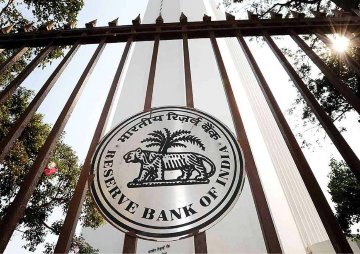 This is the 83rd article in the series
This is the 83rd article in the series The China Chronicles.
Read the articles here.
A notable phenomenon of 21st century international relations is that states often seek to forge cooperation, despite long-standing disputes between them. Thus, while government officials and military personnel continue to engage each other on sensitive issues, a side channel communication, namely track II consisting of strictly non-officials such as journalists, academics and analysts, can and should be opened to forge bilateral cooperation in sectors such as trade and development.
Although backed by governments, these dialogues are held in an unofficial and informal setting and focus on developing interpersonal relations between the non-official actors of the adversarial states. The aim is to transform the negative image of the adversary into a positive one, in order to foster cooperation and resolve deep-seated conflicts. These dialogues are carefully structured and have an in-built mechanism to provide advice and recommendations to governments on both sides. Think tanks, therefore, have emerged as key facilitators for these dialogues.
The aim is to transform the negative image of the adversary into a positive one, in order to foster cooperation and resolve deep-seated conflicts.
Current dialogue between India and China
It has not been long since India and China started to engage in track II dialogues. The foundations of these dialogues were laid in April 2005, when the Indian Council of World Affairs (ICWA) and Chinese People’s Institute of Foreign Affairs (CPIFA) signed a Memorandum of Understanding (MoU) to seek bilateral cooperation. The first structured dialogue, however, only began as late as November 2013. In the following year, an MOU was signed between the Chinese Academy of Social Sciences and India’s Ministry of External Affairs during PM Modi’s visit to that kicked off a series of think tank dialogues between the countries. Further ahead, during the Wuhan Summit, where strategic talks were held between the Indian Prime Minister Modi and Chinese President Xi Jinping in April 2018, a consensus was reached to accelerate people to people and cultural exchanges between the countries. Think tanks were recognised as important agents to implement the consensus reached by their leaders.
Apart from carrying out informal discussions, both the governments have been utilising research centres dedicated to India and China studies to cultivate more expertise in both countries in order to promote mutual understanding and facilitate international exchanges.
Of late, frequent track two dialogues facilitated by the leading think tanks between the two countries have taken place to augment the overall engagements, including cooperation in the spheres of defence and security cooperation. At the close of each of these dialogues, government officials are actively involved in the debriefing process in the form of a policy recommendation report, which is drafted and submitted to the government. Retired diplomats and security advisors, who no longer hold official positions, play a crucial role in mediating between the official and the non-official domains. For instance, Shivshankar Menon, former National Security Adviser of India and Special Representative led a high-level track-2 dialogue at Manesar organised by the Institute of Chinese Studies (ICS) and Sichuan University in March 2019, for India-China Boundary Question, and Dai Bingguo, former State Councillor of China.
Additionally, apart from carrying out informal discussions, both the governments have been utilising research centres dedicated to India and China studies to cultivate more expertise in both countries in order to promote mutual understanding and facilitate international exchanges. Scholars from China and India are also engaged in joint research projects and visiting scholar programmes, as well as the exchange of students between universities and institutes.
Hybrid outcomes in security, trade and connectivity
Track two dialogues have been instrumental in developing an understanding of each other’s security concerns and perspectives. Representatives from the Indian side discuss their security concerns regarding China’s continued logistical and military support to Pakistan, and its heavy investment in CPEC (China-Pakistan Economic Corridor) that violates India’s territorial integrity. Similarly, the Chinese representatives discuss their concerns regarding India’s ties with America and its role in America’s Indo-Pacific strategy. These dialogues have been instrumental in reducing the trust deficit between the two countries — which has further led to demonstrable success in forging cooperation in bilateral trade and regional connectivity.
The BCIM economic corridor — a critical sub-regional initiative involving the member governments was first proposed in the track II dialogue.
For instance, in recent years some Chinese companies, such as Xiaomi, have strengthened their research on Indian culture, domestic law and business environment to expand their business in India. The employees of Xiaomi Branch in India are engaged in communication with local people and grass-roots officials and establish a friendship and deeper economic integration. By expanding and enhancing connections with civil society, Xiaomi, Vivo, Oppo, One plus and other Chinese companies bring a distinct feature to India-China relations. Similarly, Indian pharmaceutical companies have been engaging with local Chinese facilities to create an acceptance of Indian medicines in China, thus making inroads into the Chinese market.
The track II dialogues have been particularly instrumental in laying the ground for regional connectivity. The BCIM (Bangladesh–China–India–Myanmar) economic corridor, a critical sub-regional initiative involving the member governments was first proposed in the track II dialogue. From track II discussions to intergovernmental cooperation, the BCIM economic cooperation mechanism provides a new way for deeper political and economic ties between the two countries.
The way forward
Although track II dialogues between the two countries have only begun in the last few years, they have great potential in promoting stable bilateral relations in the future. The key is how to make full use of the existing mechanisms, expand new channels of communication, explore broader topics for discussion, and improve the efficiency of influencing government decision-making.
The trust deficit is a critical issue in Sino-Indian bilateral relations that cannot be ignored. In order to solve this problem, track II can play a more active role. The focus needs to be on expanding "trust society" with "high trust" by facilitating personnel exchanges at all levels and in all fields of society. Only when this part of the population is involved, can it be possible to weaken the mutual trust deficit.
While breakthroughs are based on recognition of the lack of knowledge and differences in understanding, and the need to further communication through multiple levels, including track II dialogues.
In the future, it must be recognised that dialogue needs both a foundation and a breakthrough. Foundation means consensus. Both countries share a consensus on many issues, including regional and global issues. While breakthroughs are based on recognition of the lack of knowledge and differences in understanding, and the need to further communication through multiple levels, including track II dialogues.
First, there is a need to control negative publicity in the relationship. The media remains the closest to the political establishment and serves as the link between the governments and the public. Their narrative directly shapes public perception. In times of fast and interactive engagement through social media, it is the responsibility of media to convey real information and avoid playing the role of a ‘bad guy’. The media once played the role of a ‘bad guy’ that contributed to the souring of people to people relations between the two countries. In future, deeper engagements between the media persons of the two countries would be necessary for improving the image of the two countries.
Second, academia needs to be proactively involved. The improvement of the India-China relations require rational voices, and scholars are the ones who make rational voices. There is a need to cultivate expertise on India and China in academic institutions and through a robust educational exchange such as visiting scholar and student exchange programmes. A comprehensive and substantial study of each other’s national and social conditions is necessary to strengthen cooperation.
Third, the cultural industry, including tourism, entertainment, publications, internet service sectors, needs to be targeted. The last few years have witnessed an enthusiastic reception of films both sides, especially when the Indian movie ‘Dangal’ broke box records in China and generated great interest in India among the Chinese populace. Actor Aamir Khan’s visit to the Chinese film forum as a messenger also serves as a good illustration of how the cultural industries of China and India are strengthening track II dialogues and fulfilling commitments made by leaders of the two countries for stronger bilateral relations.
Co-author Wu Lin is Research Fellow at the Institute of Asian Studies, China Foreign Affairs University.
The views expressed above belong to the author(s). ORF research and analyses now available on Telegram! Click here to access our curated content — blogs, longforms and interviews.



 This is the 83rd article in the series The China Chronicles.
Read the articles
This is the 83rd article in the series The China Chronicles.
Read the articles  PREV
PREV

